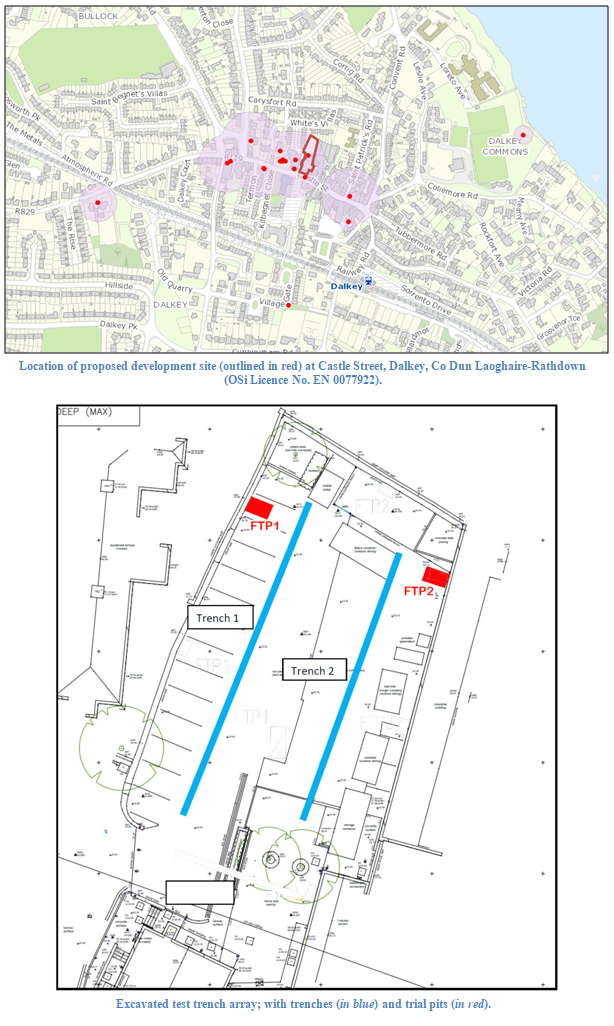2022:663 - The Queen's Public House, Castle Street, Dalkey, Dublin
County: Dublin
Site name: The Queen's Public House, Castle Street, Dalkey
Sites and Monuments Record No.: DU023-023
Licence number: 22E0803
Author: Thaddeus Breen; Shanarc Archaeology Ltd.
Author/Organisation Address: Unit 39a, Hebron Business Park, Hebron Road, Kilkenny
Site type: Urban
Period/Dating: Modern (AD 1750-AD 2000)
ITM: E 726370m, N 726968m
Latitude, Longitude (decimal degrees): 53.277960, -6.105107
Archaeological test-excavation was undertaken as part of an Archaeological Impact Assessment relating to the proposed construction of 30 bedrooms of guest accommodation, in two-storey, flat-roofed wings in a landscaped garden and associated site works to the rear of an existing pub and restaurant, The Queen’s Public House at Castle Street, Dalkey.
A total of two test trenches were machine excavated across the proposed development site; these were positioned to cover the main area of development. Additionally two trial pits were dug to allow the site engineers to examine the foundations of the boundary walls at the site.
Trench 1 measured 25m in length, 1.5m in width and 0.3-1.6m in depth. Trench 2 measured 24m in length, 1.5m in width and 0.2-2m in depth. Excavated material comprised two levels of modern tarmacadam separated by a layer of modern 804 gravel; the lower tarmacadam layer overlay a rubble deposit containing bricks, slates and mortar; this overlay dark brown silty soil and areas of bedrock.
Multiple finds were recovered, comprising ceramic, glass, clay-pipe fragments and a wide variety of metal objects, including nails, but mostly unidentifiable. All of this material appeared to be of 19th– and 20th-century date and it was mostly found within the noted rubble layer.
The two Trial Pits measured 1.8m in length, 1.4-1.6m in width and 1.3m in depth. The stratigraphy in Trial Pit 1 was identical to the test trenches, while Trial Pit 2 also contained modern services and the lower portion of the existing stone boundary wall and its stone and rubble foundations; this wall was associated with the adjacent 19th-century tram sheds visible in the 1908-1911 OSi 25-inch maps.
No features of archaeological interest were noted.
A metal detection survey under detection device licence no. 22R0357 was carried out in tandem with the test-excavation. All excavated soil was subject to a visual assessment and to metal detection to identify and retrieve archaeological objects, carried out on the basis that the work was taking place within the site of a medieval village. A large number of metal objects and fragments were found. A preliminary examination showed that they all appear to be post-medieval in date. Identified items include a large pair of pincers, a tap from a wooden beer keg and a badly worn Irish halfpenny of George III.

